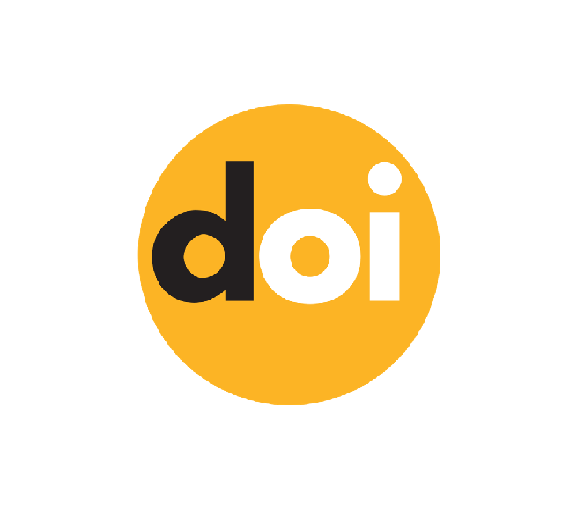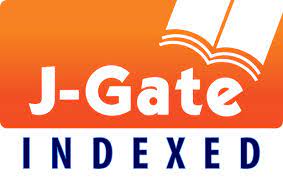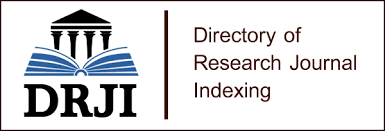PROSPECTS AND CHALLENGES OF USING BIG DATA IN HEALTHCARE SECTOR OF BANGLADESH: FOCUS ON THE REFORMATION OF THE HEALTHCARE SYSTEM
Abstract
The health care industry truly has created expansive measures of information, driven by record keeping, consistency and administrative prerequisites, and patient care. Big Data has taken the world by a variable tempest, touching each division from healthcare to promoting in heap distinctive ways, enhancing productivity, adding to process effectiveness, and making a situation where advancements flourish and thrive. The hospitals in Bangladesh which for all intents and purposes sit on the vast amount of data of their patients are yet to devise a strategy in utilizing those data genuinely to give their patients a superior service. Big data analytics in Bangladeshi healthcare sector can be developed into a promising field for providing knowledge from extensive data sets and enhancing the outcome of the results while decreasing expenses. Its potential is great; be that as it may, there remain difficulties to overcome. Therefore, the study of this paper aims to describe the prospects and challenges of big data analytics in Bangladeshi healthcare sector. The study of this paper is based on secondary sources where a qualitative research is conducted to analyse the social and economic issues relating to the Bangladeshi healthcare system using Big data. In sum, this paper gives a broad overview of big data analytics for the healthcare researchers and the practitioners.
References
Ahmed, I. (2013). Social safety nets in Bangladesh: Institute of South Asian Studies, National University of Singapore.
Bastian, M., Heymann, S., & Jacomy, M. (2009). Gephi: an open source software for exploring and manipulating networks. Icwsm, 8, 361-362.
Beall, A.-L. Big data in health care How three organizations are using big data to improve patient care and more. Retrieved from https://www.sas.com/en_us/insights/articles/big-data/big-data-in-healthcare.html
Benevento, D. (2015). Tableau for Healthcare (1 ed.). United States: HealthDataViz.
Berman, J. J. (2010). Methods in medical informatics: fundamentals of healthcare programming in Perl, Python, and Ruby: CRC Press.
Bradley, P. S. (2013). Implications of big data analytics on population health management. Big data, 1(3), 152-159.
Dean, A. G., Sullivan, K. M., & Zubieta, J. (2000). Epi Info 2000: A database, and statistics program for public health professionals for use on Windows 95, 98, and NT computers.
Frank, E., Hall, M., Trigg, L., Holmes, G., & Witten, I. H. (2004). Data mining in bioinformatics using Weka. Bioinformatics, 20(15), 2479-2481.
Gupta, I., Joe, W., & Rudra, S. (2010). Demand Side Financing in Health: How far can it address the issue of low utilization in developing countries. World health report.
Han, J., Rodriguez, J. C., & Beheshti, M. (2008). Diabetes data analysis and prediction model discovery using rapidminer. Paper presented at the Future Generation Communication and Networking, 2008. FGCN'08. Second International Conference on.
Hitzler, P., & Janowicz, K. (2013). Linked Data, Big Data, and the 4th Paradigm. Semantic Web, 4(3), 233-235.
Islam, A., & Biswas, T. (2014). Health system in Bangladesh: Challenges and opportunities. American Journal of Health Research, 2(6), 366-374.
Islam, I. (2010). Bangladesh Telecom Sector: Challenges and Opportunities. Asian Tiger Capital Partners.
Jee, K., & Kim, G.-H. (2013). Potentiality of big data in the medical sector: focus on how to reshape the healthcare system. Healthcare informatics research, 19(2), 79-85.
Jensen, P. B., Jensen, L. J., & Brunak, S. (2012). Mining electronic health records: towards better research applications and clinical care. Nature Reviews Genetics, 13(6), 395-405.
Laney, D. (2001). 3D data management: Controlling data volume, velocity and variety. META Group Research Note, 6, 70.
Mihaela-Laura, I., TRIFU, M. R., VELICANU, M., & CIUREA, C. Using Business Intelligence Tools for Predictive Analytics in Healthcare System.
Patel, S., & Patel, A. (2016). ABig DATA REVOLUTION IN HEALTH CARE SECTOR: OPPORTUNITIES, CHALLENGES AND TECHNOLOGICAL ADVANCEMENTS. International Journal of Information, 6(1/2).
Patil, D., & Mason, H. (2015). Data Driven: " O'Reilly Media, Inc.".
Pettey, C. (2012). Gartner says big data creates big jobs: 4.4 million IT jobs globally to support big data by 2015. Paper presented at the Analysts Discuss Key Issues Facing the IT Industry During Gartner Symposium/ITxpo 2012.
Raghupathi, W., & Raghupathi, V. (2014). Big data analytics in healthcare: promise and potential. Health information science and systems, 2(1), 3.
Report, S. B. (2017, June 16, 2017). Tier 4 data centre a step closer to reality, The Daily Star. Retrieved from http://www.thedailystar.net/business/tier-4-data-centre-step-closer-reality-1420921
Rezaee, Z., & Wang, J. (2017). Relevance of Big Data to Forensic Accounting Practice and Education: Insight from China. Paper presented at the International Conference on Accounting and Finance (AT). Proceedings.
Russom, P. (2011). Big data analytics. TDWI best practices report, fourth quarter, 19, 40.
Staa, T. P., Klungel, O., & Smeeth, L. (2014). Use of electronic healthcare records in largeâ€scale simple randomized trials at the point of care for the documentation of valueâ€based medicine. Journal of internal medicine, 275(6), 562-569.
Trautman, L. J. (2016). Following the Money: Lessons from the Panama Papers, Part 1: Tip of the Iceberg.
White, S. E. (2014). A review of big data in health care: challenges and opportunities. Open Access Bioinformatics, 6, 13-18.
WorldBank. (2017a). Health expenditure, private (% of GDP). Retrieved November 18, 2017, from https://data.worldbank.org/indicator/SH.XPD.PRIV.ZS
WorldBank. (2017b). Health expenditure, public (% of total health expenditure). Retrieved November 18, 2017, from https://data.worldbank.org/indicator/SH.XPD.PUBL?end=2014&locations=BD&start=2004&view=chart
WorldBank. (2017c). Hospital beds (per 1,000 people) in Bangladesh. from https://data.worldbank.org/indicator/SH.MED.BEDS.ZS?locations=BD
Published
How to Cite
Issue
Section
License
Copyrights for articles published in Journal of Asian and African Social Science and Humanities are retained by the authors, with first publication rights granted to the journal. The journal/publisher is not responsible for subsequent uses of the work. It is the author's responsibility to bring an infringement action if so desired by the author.
Articles published in Journal of Asian and African Social Science and Humanities are published under the Creative Commons Attribution (CC-BY) license, which permits others to distribute, remix, tweak, and build upon your work as long as they credit you for the original creation.
Â














